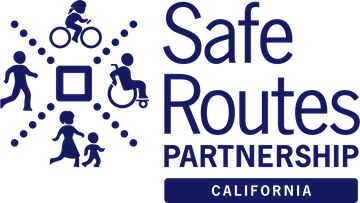
The California Transportation Commission (CTC) has received scores from evaluators on the Cycle 3 applications, and is currently reviewing them and making staff recommendations. The list of awarded projects is expected to be released on October 28.
In the meantime, last month we shared the news that the Governor and state legislature came to an agreement on how to spend a portion of cap-and-trade revenue as part of this year’s budget, and ATP is receiving $10 million. Money from the Greenhouse Gas Reduction Fund (GGRF) is subject to different requirements than the federal and state funds in the ATP right now, so the CTC has released a set of guidelines for how it plans to spend this money. They also will be holding a workshop this Wednesday, October 5 from 1:00 to 4:00 p.m. in Sacramento and by teleconference (details here).
Here’s what we know so far about how this money will be spent:
- The CTC will not do another Call for Projects for this funding, but instead use it to supplement the Cycle 3 statewide competition. Given that scores for those applications are being finalized, after the CTC announces the awards in late October, they will notify the awardees and ask if they want to receive their funding from the GGRF instead of the traditional federal & state funds. If they do not get enough applicants that are interested from the statewide competition, they will apply it to the small urban & rural and MPO competitions and ask them if they want to be considered after those awards are announced in the spring.
- The funding must be programmed and allocated by June 30, 2018, which is sooner than the current Cycle 3 applications (FY 2019-20 and 2020-21). As a result, Cycle 3 awardees will be asked if they can expedite their projects to meet that deadline if they want to be eligible for this funding. There will be no project extensions allowed so applicants must be able to complete their projects by this date.
- The definition of “disadvantaged communities” is more limited under the GGRF. Only CalEnviroScreen can be used to demonstrate your community is disadvantaged. So Cycle 3 applicants interested in this funding must supplement their application with their CES score. But the CTC does intend to allocate at least 50% of these funds on projects within or that directly benefit disadvantaged communities.
- In addition to CES, applicants will also have to fill out a few other supplemental questions, including a project request form, quantification of greenhouse gas reductions from the project (using methodologies from the Air Resources Board), and details such as average daily traffic, length of project, number of activity centers, etc. that are asked of transportation projects currently funded by the GGRF.
- The focus will be on infrastructure projects in the construction phase, so noninfrastructure and planning will not be eligible. Given the small amount of funding, this is not a surprise but we do want to ensure that they can be eligible in future rounds if the CTC intends to use these guidelines again. Noninfrastructure is eligible for funding in the Affordable Housing Sustainable Communities program, also funded by GGRF, and several programs fund plans. We will be submitting a comment letter on the guidelines encouraging CTC to consider noninfrastructure and plans as an eligible use of GGRF ATP funds.
The guidelines are available here. The CTC will approve them at its next meeting in San Jose on October 19-20 so it is a quick turnaround, but we are excited to see a few more projects get funded this year!


